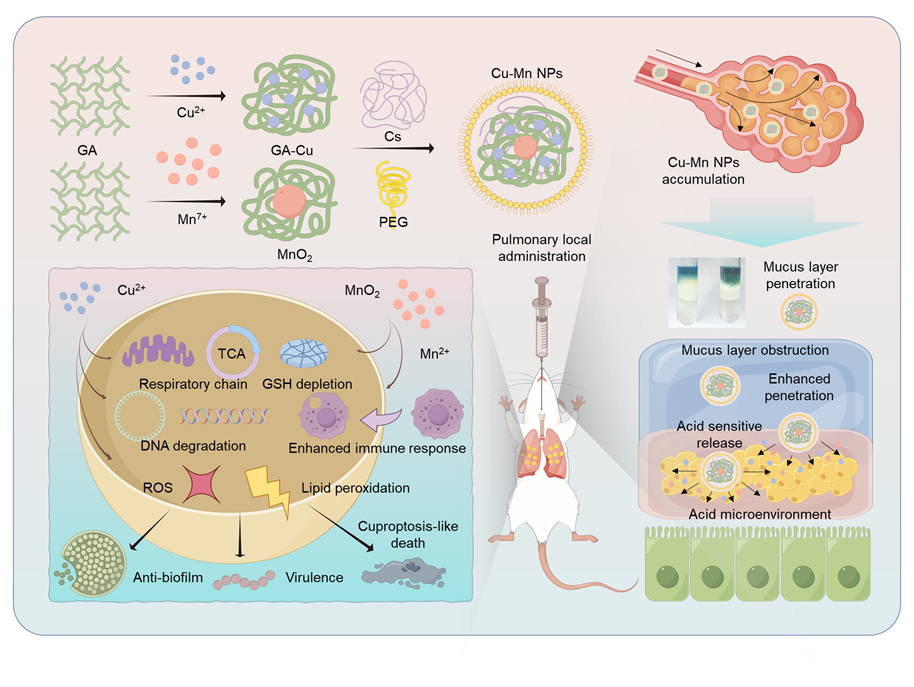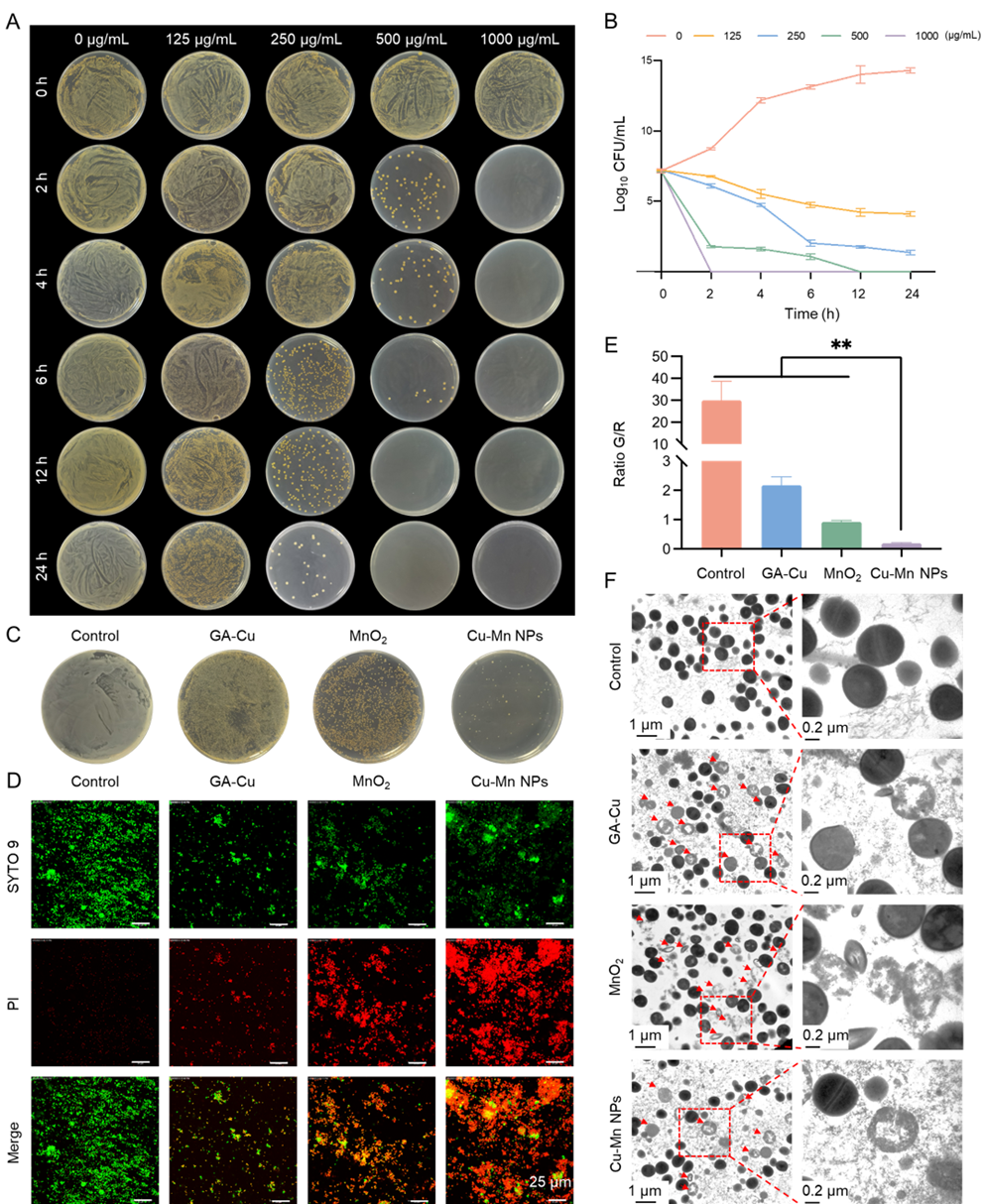Bacterial pneumonia is one of the challenging global infectious diseases with high morbidity and mortality. Considering the antibiotic abuse and resistance of bacterial biofilms, a variety of metal-based materials have been developed. However, due to the high oxygen environment of the lungs, some aerobic infection bacteria have high tolerance to oxygen and ROS, and most of the metal-based materials based on ROS may not achieve good therapeutic effects.
Recently, Professor Min Zhou's team from the Second Affiliated Hospital of Zhejiang University School of Medicine/Zhejiang University-University of Edinburgh Institute published a research paper titled A mucous permeable local delivery strategy based on manganese-enhanced bacterial cuproptosis-like death for the bacterial pneumonia treatment in the ACS Nano, making new progress in the bacterial cuproptosis-like death for the bacterial pneumonia treatment.

Copper, a long-established antimicrobial material, has recently been found to trigger copper-induced cell death after its accumulation within biofilms by interacting with components in the tricarboxylic acid (TCA) cycle. Cell death induced by copper is associated with cell respiration, in which cells dependent on aerobic respiration are more sensitive to copper-induced death, showing potential application in the treatment of pulmonary aerobic infections. However, the application of copper death to the treatment of bacterial infections has been limited, starting with the protective effect of glutathione, which can interact with copper and thus hinder the interaction of copper with proteins.Another key point is the concentration of copper ions, considering the toxicity of copper ions, direct intravenous injection of large doses of copper preparations can lead to serious toxic effects.

Inspired by the sensitivity of cuproptosis to aerobic respiratory cells, we designed a copper composite antibacterial nanoparticle and found that it can effectively induce cuproptosis-like death in aerobic bacteria of the lung. To address the challenge of in vivo application of cuproptosis, manganese dioxide was first incorporated to deplete protective glutathione, and assists in antibacterial action through immune enhancement. Cuproptosis-like death also requires a large amount of copper ions. To meet this demand, we deliver positively hydrophilic modified composite nanoparticles that effectively penetrate the lung mucus layer directly to the lungs through local administration, and the copper ions were further released rapidly by the acidic environment at the infected site, which can further destroy bacterial biofilms in synergy with manganese. This drug delivery system can effectively treat pneumonia caused by aerobic bacteria and avoid the systemic toxicity that can be caused by large doses of copper.
Dr. Shiyuan Hua from the Min Zhou team at the Zhejiang University-University of Edinburgh Institute (ZJU-UoE Institute) is the first author of the paper. Dr. Huiqun Hu from the Department of Infectious Diseases, the Second Affiliated Hospital, Zhejiang University School of Medicine is the co-first author of the paper. Professor Min Zhou from the ZJU-UoE Institute and Professor Feng Xu from the Department of Infectious Diseases, the Second Affiliated Hospital, Zhejiang University School of Medicine are the co corresponding authors of the paper.







